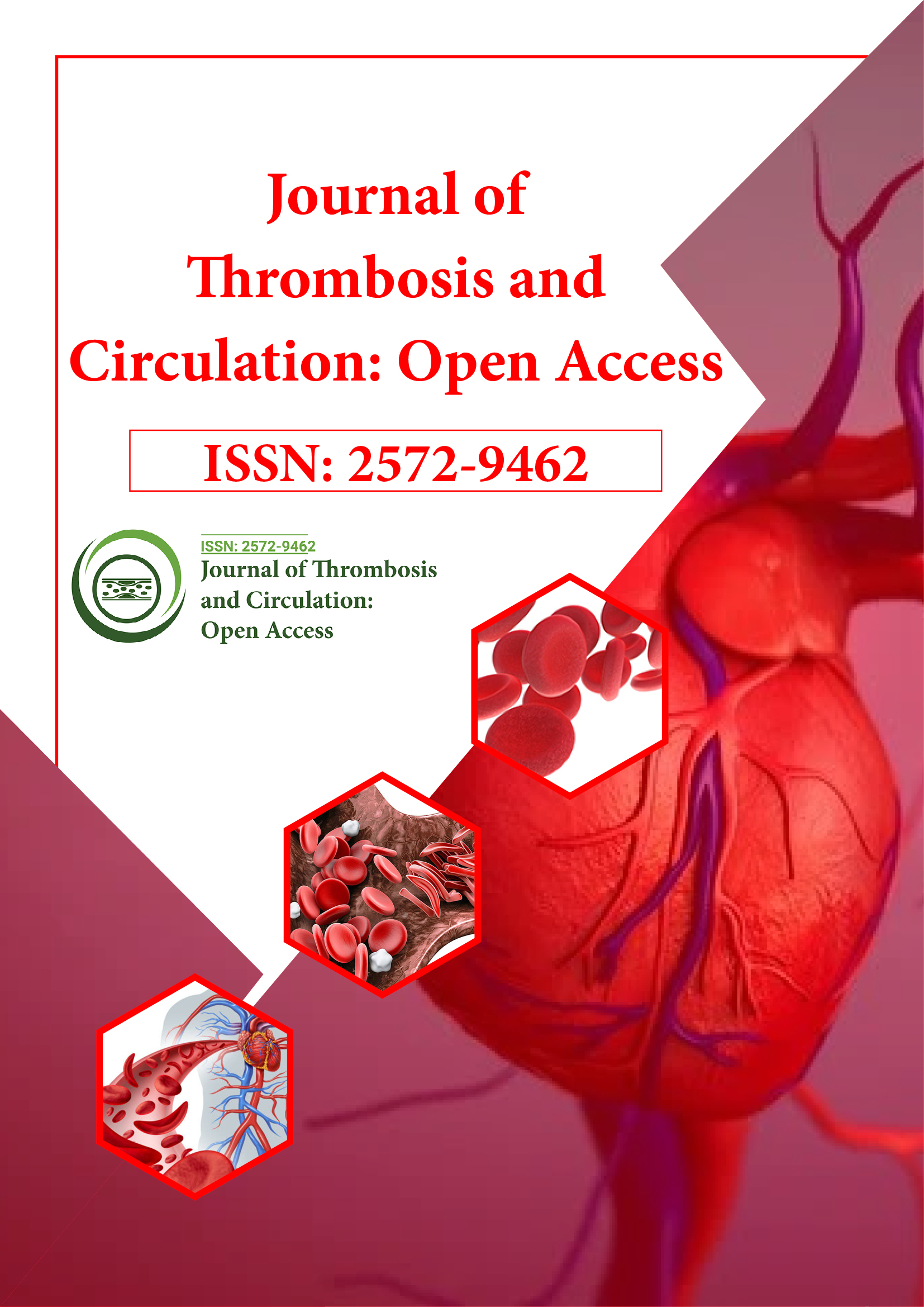Indexed In
- RefSeek
- Hamdard University
- EBSCO A-Z
- Publons
- Google Scholar
Useful Links
Share This Page
Journal Flyer

Open Access Journals
- Agri and Aquaculture
- Biochemistry
- Bioinformatics & Systems Biology
- Business & Management
- Chemistry
- Clinical Sciences
- Engineering
- Food & Nutrition
- General Science
- Genetics & Molecular Biology
- Immunology & Microbiology
- Medical Sciences
- Neuroscience & Psychology
- Nursing & Health Care
- Pharmaceutical Sciences
Opinion Article - (2023) Volume 9, Issue 5
Identifying the Causes and Treatments of Idiopathic Internal Jugular Vein Thrombosis
Sawaf Battikh*Received: 18-Aug-2023, Manuscript No. JTCOA-23-23289; Editor assigned: 21-Aug-2023, Pre QC No. JTCOA-23-23289 (PQ); Reviewed: 06-Sep-2023, QC No. JTCOA-23-23289; Revised: 13-Sep-2023, Manuscript No. JTCOA-23-23289 (R); Published: 21-Sep-2023, DOI: 10.35248/2572-9462.23.9.248
Description
Idiopathic Internal Jugular Vein Thrombosis (IIJVT) is a rare medical condition characterized by the formation of blood clots within the internal jugular vein without any apparent underlying cause. While not as common as other venous thromboembolic disorders, IIJVT can lead to significant morbidity and even lifethreatening complications if not promptly diagnosed and treated. In this article, we will explore the causes, clinical presentation, diagnosis, and treatment options for IIJVT.
The Internal Jugular Vein (IJV) is a major blood vessel located in the neck, responsible for draining blood from the brain, face, and neck back to the heart. When a thrombus, or blood clot, forms within the IJV without a clear cause, it is termed idiopathic. IIJVT can be challenging to diagnose since its symptoms are often non-specific and may mimic other medical conditions. The underlying mechanisms that lead to the development of IIJVT are not well understood, making it a topic of ongoing research.
IIJVT can present with a range of symptoms, which can include:
• Patients often experience localized pain and discomfort in the neck.
• Swelling of the neck, particularly on one side, may be evident.
• Bluish discoloration of the neck and face due to impaired blood flow can occur.
• Enlargement of the internal jugular vein can be observed.
• Some patients may report headaches, often on the affected side.In severe cases, IIJVT can lead to neurological symptoms such as vision changes, dizziness, or even a stroke.
Diagnosis
Diagnosing IIJVT requires a combination of clinical assessment and imaging studies. The following steps are typically taken:
Medical history and physical examination: A thorough evaluation of the patient's medical history and a physical examination are essential to identify risk factors and assess the clinical presentation.
Ultrasound: Doppler ultrasound is often the first-line imaging modality for diagnosing IIJVT. It can visualize blood flow within the veins and identify the presence of clots.
Computed Tomography (CT) or Magnetic Resonance Imaging (MRI): These imaging techniques may be used to provide a more detailed view of the clot and assess its extent.
Blood tests: Coagulation studies may be conducted to evaluate the patient's clotting profile.
Treatment
The primary goal of treating IIJVT is to prevent complications and resolve the clot. Treatment strategies may include:
Anticoagulation therapy: The administration of anticoagulant medications, such as heparin or low molecular weight heparin, is the cornerstone of IIJVT treatment. These medications prevent the clot from growing and help the body dissolve it over time.
Thrombolytic therapy: In severe cases or when there is a risk of complications, thrombolytic agents like Tissue Plasminogen Activator (tPA) may be used to rapidly dissolve the clot.
Surgical intervention: In some instances, especially when medical therapy is ineffective or there is a risk of severe complications, surgical procedures like thrombectomy or stent placement may be considered.
Supportive measures: Pain management, elevation of the head of the bed, and treatment of underlying medical conditions that contribute to clot formation may be necessary.
Prognosis
With timely and appropriate treatment, the prognosis for IIJVT is generally favorable. Most patients experience significant relief from symptoms, and the risk of complications, such as pulmonary embolism or stroke, is reduced. However, long-term follow-up is often recommended to monitor for recurrence and manage any underlying risk factors.
Idiopathic Internal Jugular Vein Thrombosis is a rare but potentially serious medical condition that requires prompt diagnosis and treatment. Physicians must remain vigilant when assessing patients with unexplained neck pain, swelling, or other concerning symptoms. Through a combination of imaging studies and anticoagulation therapy, patients with IIJVT can achieve positive outcomes and avoid life-threatening complications. Ongoing research into the causes and treatment of IIJVT will continue to improve our understanding and management of this condition.
Citation: Battikh S (2023) Identifying the Causes and Treatments of Idiopathic Internal Jugular Vein Thrombosis. J Thrombo Cir. 9:248.
Copyright: © 2023 Battikh S. This is an open-access article distributed under the terms of the Creative Commons Attribution License, which permits unrestricted use, distribution, and reproduction in any medium, provided the original author and source are credited.
